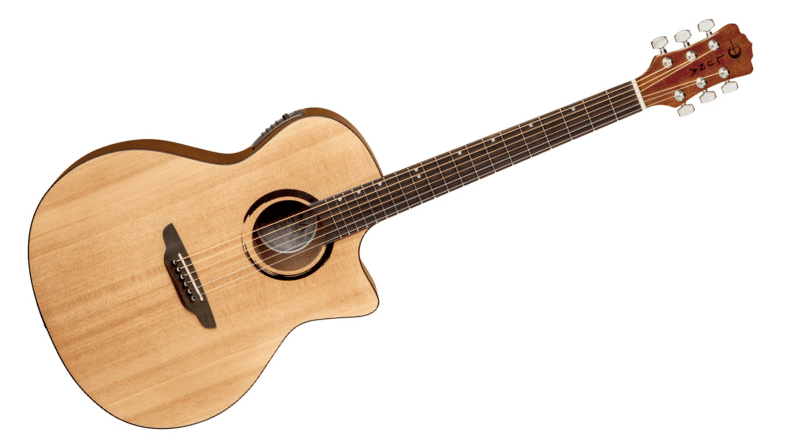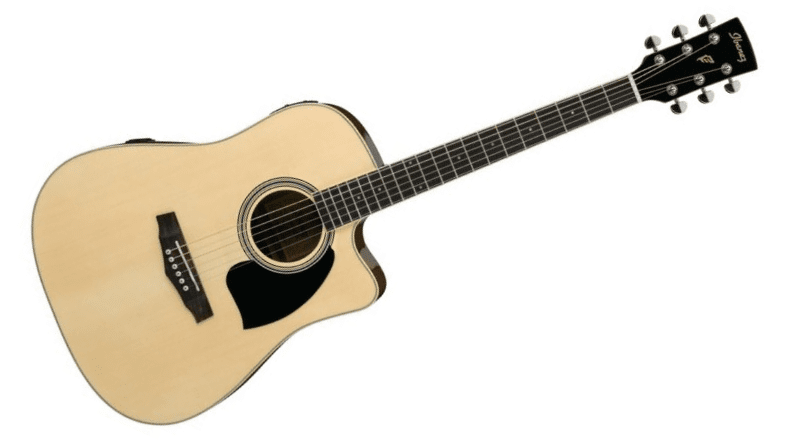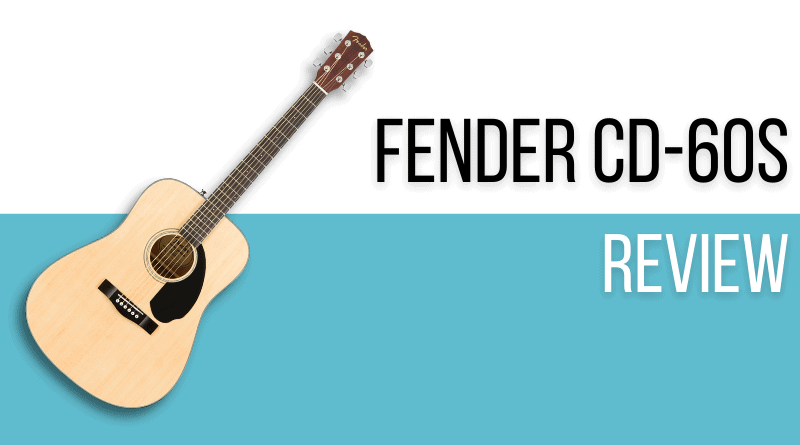The market for affordable acoustic guitars for beginners is vast. At the 200 to 250 dollars range, you’ll find many options from a variety of brands.
The CD-60S is Fender’s answer to a distinct challenge this specific market has: how do you make an inexpensive guitar that is pleasurable to play and has good sound?
With a combination of tonewoods that is not common at this price point, Fender has delivered on the promise to combine affordability and quality for beginners. After all, not even beginners like a guitar with high action, poor sound, and the inability to stay in tune. This is true whether they realize it or not.
The CD-60S is a Dreadnought Acoustic guitar that aims to raise the bar on inexpensive acoustics. Let’s see how it fares.
Read more about our review process.
Contents
Who Is This For?
The Fender CD-60S Dreadnought is a nice option for beginners. It allows the student to focus on learning the instrument without having to deal with tuning and high-action issues, like those you find in other beginner’s guitars.
Additionally, this guitar is also a good choice for the songwriter that is budget-conscious or just wants an additional instrument to take on trips without worrying too much about it.
Appearance/Features/Controls
The CD-60S acoustic dreadnought features a solid spruce top and mahogany back and sides. This is an improvement over most beginners’ guitars, including Fender’s CD-60 which features laminated nato on the back and sides.
Simply stated, mahogany is far superior to nato as a tonewood. This is because as opposed to nato, mahogany gives you a nice bass range, a controlled high end, and an excellent midrange. In short, it offers you a balanced and warm tone, which is why it is so common in guitars, even pricey ones.
It is quite nice that Fender was able to build a beginner guitar with Mahogany on the back and sides, and this has a clear impact on the sound of the CD-60S.
Another common problem with beginner guitars is they are hard to play. One of the main culprits here is high action. A high action means that the strings are too far from the fretboard, so you have to press a lot harder and from further up. This can get clumsy and uncomfortable really fast.
However, the CD-60S features a nice action with a comfortable walnut fingerboard that has rolled edges.
This dreadnought guitar features a walnut fretboard with 20 frets, 12-inch radius, and a 25.3-inch scale length. The neck felt comfortable on our initial inspection and with nice playability for a guitar in this price range.
This is an important point. Learning guitar can be frustrating at first, but this guitar does make it a bit easier on the hands and fingers.
The CD-60S does not feature any tone controls or electronic system. It is a strictly acoustic guitar. This is another advantage, as including an electronic system would raise the price of this instrument drastically, likely pushing it out of the 200-dollar range.
Performance/Sound
We started our tests with a series of open chord progressions sprinkled with a few bar chords. It immediately became apparent that the CD-60S is a great choice for a first guitar.
The sound was balanced and projected well, thanks mostly to this guitar being a dreadnought with mahogany back and sides, combined with the spruce top. Even when we went higher on the fretboard, this acoustic guitar was still loud and balanced.
Although these are reasonable traits to expect from most guitars, it is not common to get them at this price point.
The same is true for the playability of the Fender CD-60S. This instrument felt comfortable during all of our chord-playing and while trying a few licks all over the fret.
Throughout our tests, we noticed that the action remains consistent in the entire fretboard, something that is also not typical for inexpensive guitars. What usually happens with guitars at this price range is that the action starts to rise once you get past the seventh fret, sometimes even before.
Additionally, the tuning on this guitar is stable, and the intonation is consistent across the fretboard.
The Fender CD-60S sounds and feels the best when playing chords. That is a nice attribute, as chords is exactly where a typical beginner will spend most of the time. With this guitar, one can focus on the music and have the confidence that if something is hard to play, one can overcome it with practice, and not by buying a new instrument.
Although it is a beginner guitar, it sounded and felt better than most guitars in this price range.
Other Guitars To Consider
Yamaha FG800

The Yamaha FG800 is a dreadnought guitar that features a spruce top, nato/okoume back and sides, nato neck, and a walnut fingerboard. This is one of Yamaha’s best-selling guitars as it combines affordability with quality, especially for beginners.
Luna Wabi Sabi

Luna Guitars is a company that has been getting a lot of attention from savvy buyers. The Wabi Sabi dreadnought features a spruce top, mahogany back and sides, mahogany neck, and pau ferro fingerboard.
In short, this Luna acoustic guitar offers a nice combination of tonewoods, warm sound, and playability. At a very affordable price, the Wabi Sabi dreadnought is a good choice for beginners and those looking for a backup instrument as well.
Ibanez PF15ECE

The Ibanez PF15ECE is a dreadnought guitar with onbard electronics for a very low price. With a spruce top, nyatoh back and sides, mahogany neck, and nandu fingerboard, this guitar is a good option for beginners. It is also one of the few guitars that include an electronic system to amplify your sound at this price range.
Final Thoughts
The Fender CD-60S is a good choice for a beginner or a trusty backup for a songwriter. It features a special combination of tonewoods with a spruce top and mahogany back and sides. It then adds nice playability and sound, making the CD-60S a guitar that is better than most beginner guitars at this price point.


